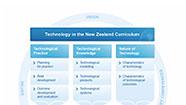Fran Edwards of Cedenco Foods explains the thorough testing required to meet customer specifications.
Testing in a global environment – Quality assurance laboratory, Cedenco Foods
Transcript
Fran Edwards: During the season we work 24 hours, seven days a week. Every day I check the results of the previous 24 hours, make sure that everything's within the customers' specifications and meanwhile, during the day, the staff have been reporting to the production supervisors to keep them up to date if anything's gone wrong. Once I’ve checked all the results have been OK for the last 24 hours, I move them into a database so they’re available for everybody to look at. I have to check the tests that they do so they’ll be doing Brix test, which is the sugar level. I’ll be looking at their colours, so there is three colours that we look at, colour L, colour A, and colour B. Every product has quite a tight specification that it has to fit within the colour chart. We do check the PH’s because each product has to be the right PH. If it was too acidic the customers won’t take it or alternatively too alkaline.
We also do the sieving where we sieve the powders through different-sized meshing, so it will go from 700 and odd metre mesh, down through more finer and finer meshes, because every customer has a specification. Certain amount have to pass through certain sizes before they’ll take the product.
We’ll do the moistures. Every product has to have the right moisture level. Various customers have various different requirements so we’re often making products specifically for a customer, to fit within their specifications.
We do viscosity testing. We’ve got a Brookfield viscometer over there which is a very precise measurement of viscosity. We also do the Bostwick, which just shows the product running down the scale, which gives a pretty good idea of the viscosity as well.
The frozen factory, which produces squash in little pieces or little slices, they do some of the testing in a small QC lab over in their area, where they’ll test for Brix and moisture and measurements to make sure that the product is falling within a certain measurement.
During the QC testing, if anything falls out of specification for a particular customer, the staff here within the lab have to go and report that to productions so they can alter, add more moisture, or take moisture out. If it’s serious they’ll contact me to come and check and we will then decide whether or not that product can go through. I also do the allocating of the product to all the customers, so I access a database that’s got all the results. Then I have to allocate certain lots to certain customers depending on their specifications. The database does sort it quite well, but there’s a lot of customers that just have funny little quirky requirements that I have to make sure that it fits exactly what they want.
Related videos
School-wide programme planning (04:18)
Cheryl Pym explains how collaboration forms the foundation for school-wide planning in technology education.
Reviewing programme planning in years 7–13 (03:23)
At Diocesan School planning focuses on technology components for years 7–10, and establishing scholarship potential in year 13....
Review of curriculum implementation (03:49)
Margaret van Meeuwen explains how a cycle of self-review has enhanced delivery of curriculum.
A technology department with a digital and design focus (04:13)
Julie Clement shares how a design focus has engaged her students.
Resourcing for a digital and design focus (03:18)
Julie Clement considers how resources influence the authentic experiences for her students.





